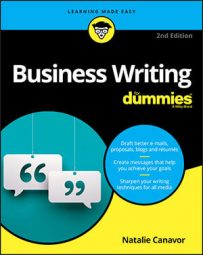If you have a technology specialist, listen to her explanations of what is practical and ask for insights into what else is possible. It’s smart to ask both kinds of professionals for choices: different ways to accomplish what you want.
- The “classic” way to compose a website calls for:
- Your business name, preferably in logo form, or something that looks like a logo
- A tagline amplifying the nature of your business so it is immediately understood
- A “positioning statement” that tells your target audiences they are in the right place
- A call to action — where to go next or something more specific — and contact information (some experts advise putting this on every page)
- An overview of the whole site, in image or words, and a clear way to access all the inside pages
The tagline needs to identify your business as closely as possible. If your business name is self-explanatory, this is easier. For example, if your name is “Main Street Drop-off Service,” you have a lot more explaining to do than if it is “Overnight Apple Repair by Main Street.”
And remember, you’re telling search engines as well as customer prospects who you are. In the case of the vague business name, you’d use the tagline to specify the actual work, such as “overnight repair of Apple products.” But if that’s already in your name, the tagline can move on to “24-hour turnaround on every laptop, desktop, and iPhone problem.”
Taglines are worth a lot of thought. But as an old advertising adage puts it, “Don’t be clever, be clear.” Suppose our theoretical senior coaching business is named “Golden Years Internet.” A tagline might read: “Personal coaching to help seniors and the physically limited connect to the online world.” Or “Open up the world. Connect. Enjoy.”
The positioning statement gives you another way to expand on what you do. It’s trendy to dispense with this, but ask yourself: Will the visitor I want, who may run across my site randomly (while looking for “nursing home entertainment,” for example) or because he was searching for my specific set of services, know immediately he is in the right place?
The positioning statement is a tool for making that match. Unless you’re a household name, take advantage of the chance. Actually, even household-name companies take pains to clarify that you’re in the right place. They may have numerous and complex websites, so must tell customers they’re in the right place to make payments, find information about a product, file a complaint, and so on.Our Golden Years Internet positioning statement might say:
In-person in southern Georgia, or online anywhere: individual or small group coaching that empowers physically limited people to socialize, learn, explore, and be entertained online.
You might add another line to address the senior’s children (for example, “Give your loved one the greatest gift of all: today’s best way to counter boredom and loneliness by connecting with the world”).
And you could even address your third audience, managers of senior residences: “Entertaining people in their golden years is easy when they know how to use today’s inexpensive tools to open up their worlds by Internet.”
Another favored home page element is an irresistible offer of some kind — sign up for a free blog, newsletter, ebook, introductory conversation, and so on. This will further your marketing plan. Do you have such materials? Can you create them, and do you want to?
Once you are clear on your message, think about how to translate it into visual form. You can illustrate it with photographs, but make them authentic — not generic stock photo people but real customers and real staff members. Use video if you can to demonstrate a learning session and to present testimonials from happy customers. Consider introducing yourself to visitors as the warm, caring, expert individual you are.

